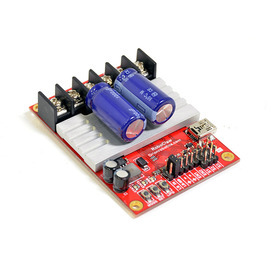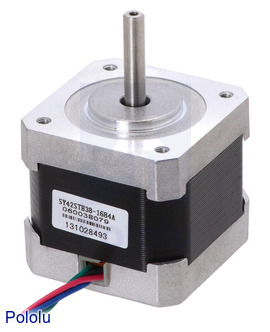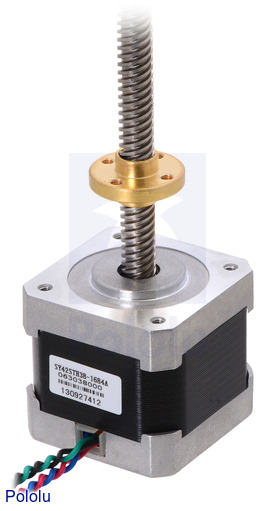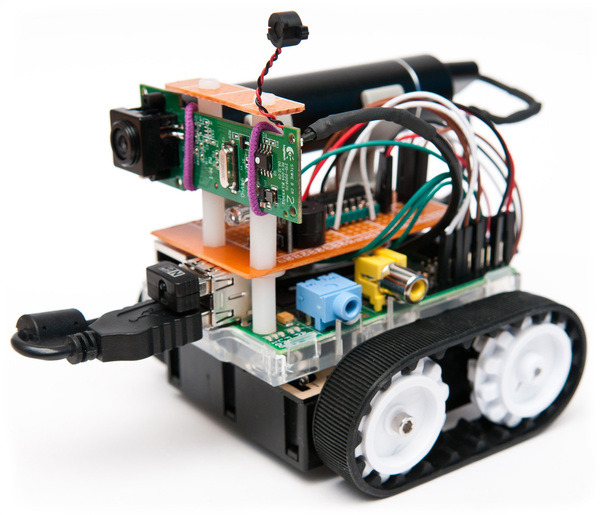Pololu Blog »
Pololu Blog (Page 65)
Welcome to the Pololu Blog, where we provide updates about what we and our customers are doing and thinking about. This blog used to be Pololu president Jan Malášek’s Engage Your Brain blog; you can view just those posts here.
Popular tags: community projects new products raspberry pi arduino more…
Adapter for universal mounting hubs to VEX wheels
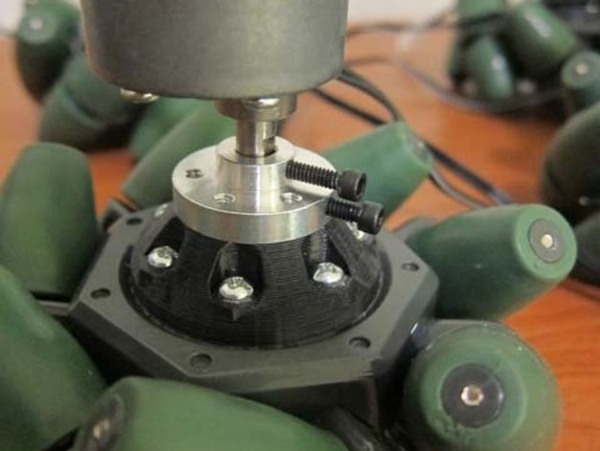 |
Forum user Hardsuit posted in this thread about the hub adapters he 3D printed for his robot, which is a roughly 1/4 scale RC Tachikoma from the Ghost in the Shell: Stand Alone Complex anime series. The adapters allow some of our universal mounting hubs to be used with VEX 4″ Mecanum wheels. You can find and download his STL file on Thingiverse.
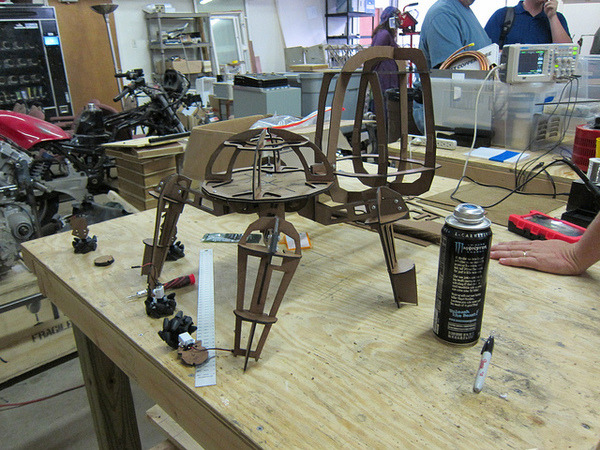 |
The previous version of forum user Hardsuit’s Tachikoma. |
|---|
The Tachikoma, which he has named Sapporo, also uses our Simple Motor Controller 18v15 and 29:1 Metal Gearmotor 37Dx52L mm. Some of the engineers here are GITS fans, and we are definitely looking forward to seeing it completed!
New product: FPF1320 Power Multiplexer Carrier with USB Micro-B Connector
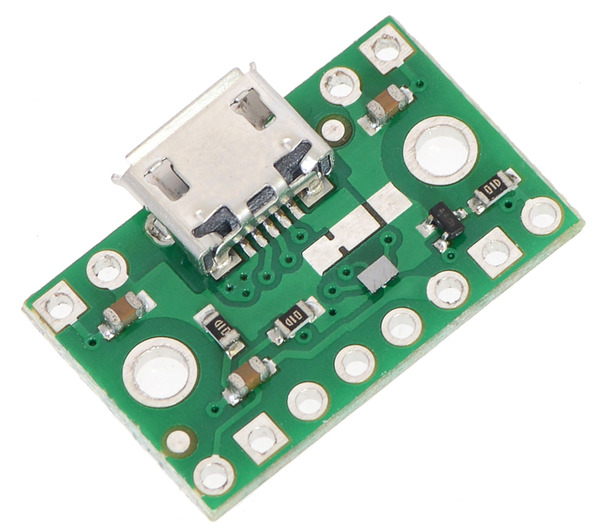 |
Here at Pololu we love USB and put a USB port on most of the microcontroller boards that we make. One of the lovable things about USB is that it provides a convenient power supply, but making good use of USB power presents a board design challenge: many of our products can be powered from either USB or an external source (e.g. batteries) and require a circuit to select between the two power sources. We call this circuit a power multiplexer, or just power mux.
A simple power mux like the one we use on the Wixel consists of a pair of diodes with a MOSFET that automatically disconnects the less-preferred power source. You can see another instance of the diode mux in the Orangutan SVP schematics (99k pdf). This works, but the forward voltage drop of the diodes can cause the output of the mux to be too low to power 5 V devices.
In the maker community, 5 V is very popular since it is the voltage standard used by numerous devices from Arduinos to Sharp Distance Sensors. Unfortunately for us, 5 V is not important for modern consumer devices like mobile phones, which operate at much lower voltages, so there is not much reason for semiconductor manufacturers to build the kind of devices that we need for good 5 V power multiplexers.
The USB power mux on many Arduinos uses a MOSFET, and does not suffer from the forward voltage drop problem, but it allows current to flow into the USB port in some situations, a potentially dangerous violation of the USB specifications.
So we were excited to find the FPF1320, a chip from Fairchild that implements a better MOSFET-based power mux circuit. The FPF1320 switches up to 1.5 A of current at 1.5 V to 5.5 V with an insignificant voltage drop, and it blocks reverse current into either of the sources. This chip seems like a great solution for USB power and other power-switching situations. Its tiny size, however, makes it inaccessible to most hobbyists:
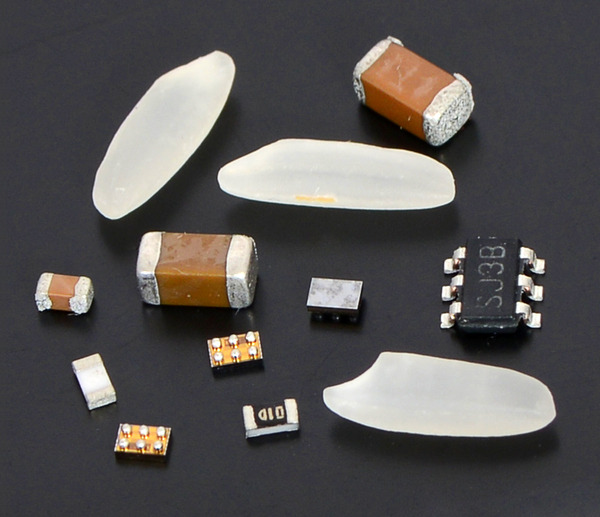 |
Three FPF1320 BGA parts (two with solder balls facing up) among grains of rice and components in 0603, 1206, and SOT-23 packages. |
|---|
That’s where we come in! We have made the FPF1320 available on a carrier board that breaks out all of its lines onto breadboard compatible pins and implements a minimal circuit to support automatic power switching. Our carrier board also breaks out a USB Micro-B connector to support USB power-switching applications. This diagram shows how the carrier would be used in a typical USB application:
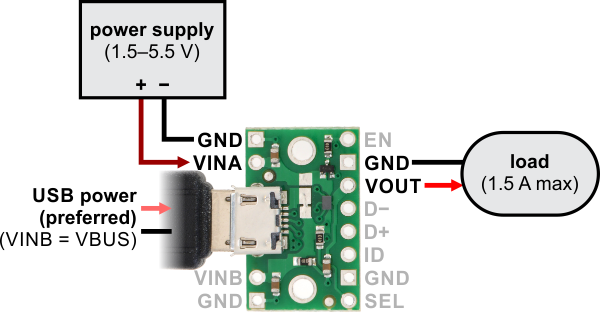 |
Typical connection diagram for using the FPF1320 power multiplexer carrier with USB as the preferred supply. |
|---|
Power multiplexers are useful for more than just USB. For example, many devices can be powered by both batteries and an external power jack, with external power preferred when it is available. Our FPF1320 carrier can be connected to two non-USB power supplies:
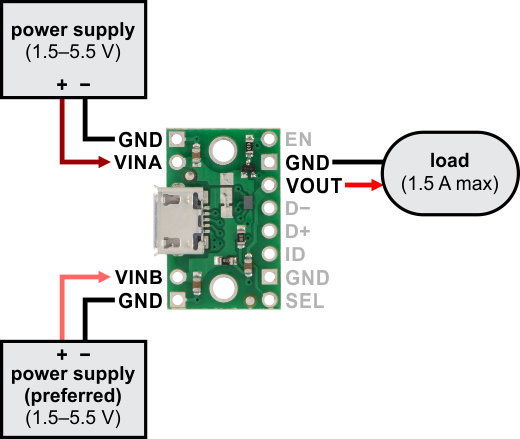 |
Typical connection diagram for using the FPF1320 power multiplexer carrier without USB. |
|---|
Building a good power mux is a challenge, and the FPF1320 is not a perfect solution. One frustrating thing about it is that it is disabled (powered off) by default, and enabling it required us to build an additional power mux into the circuit! As you can see in the schematic below, we used the double-diode technique to drive the EN line high:
 |
The diodes, unfortunately, take up more board space than the FPF1320 itself.
While typical applications involve USB and 5 V, our carrier is designed to work over the full range of input voltages supported by the FPF1320; therefore, extra consideration might be required to ensure glitch-free transitions between power sources. Specifically, we designed it to “prefer” one of the power supplies whenever it is present. The board will allow the preferred supply (and hence the output) to drop to 1.5 V or lower before switching, even if a better alternate source is available. Unfortunately, this guarantees that the voltage will always drop to below 1.5 V when switching from the preferred to the alternate source. The chip is capable of a seamless transition, and a more sophisticated application might involve monitoring the levels of both input voltages and switching in an intelligent way. You can also adjust the behavior to match typical applications using a few additional resistors or other components. Our carrier brings out the SEL line to make these kinds of modifications possible in your application.
For more information, see the FPF1320 Power Multiplexer Carrier product page.
Now with USB: New RoboClaw 2x15A and 2x30A motor controllers
We’ve started selling USB versions of these two RoboClaw motor controllers from Orion Robotics:
|
|
These new RoboClaws add a USB serial interface to the other three control interfaces available (TTL serial, RC, and analog inputs), but are otherwise identical to the V4 RoboClaw 2×15A and 2×30A controllers that we previously offered. Like their predecessors, they can drive a pair of brushed DC motors with up to 15 A or 30 A, respectively, at voltages from 6 V to 34 V. Integrated dual quadrature decoders make it easy to create a closed-loop speed control system; analog feedback is also supported for closed-loop position control.
For an even wider range of current capability, the RoboClaw 2×5A Motor Controller (V4) and the RoboClaw 2×60A Motor Controller with USB (V4) are also available.
New NEMA 17 stepper motor with optional integrated lead screw
|
|
We have added a compact, powerful new NEMA 17-size stepper motor to our wide selection of stepper motors. This 42×38 mm stepper motor is available with a standard 5 mm D-shaft for general-purpose use, but perhaps more exciting is the version with a 28 cm threaded rod, which turns it into a linear actuator capable of precision open-loop position control. This latter version has the stainless steel lead screw built right into the stepper motor, so there is no need to deal with extra hardware such as shaft couplers and set screws, and the copper alloy traveling nut with mounting holes is included. Raise your next project to new heights with the precision (40 µm per full step) and control of a stepper motor!
 |
Please see the product pages for more information:
- Stepper Motor: Bipolar, 200 Steps/Rev, 42×38mm, 2.8V, 1.7 A/Phase
- Stepper Motor with 28cm Lead Screw: Bipolar, 200 Steps/Rev, 42×38mm, 2.8V, 1.7 A/Phase
For other options, you can take a look at our full selection of stepper motors.
New product: Adafruit Data Logging Shield for Arduino
 |
This data logger shield from Adafruit provides an easy way for your Arduino to save data so you can process and analyze it later. It accepts any SD card formatted with a FAT16 or FAT32 file system, and it includes a real-time clock (RTC) for accurate timestamping of your data. Lots of documentation and resources are available from Adafruit to help you get started with the shield.
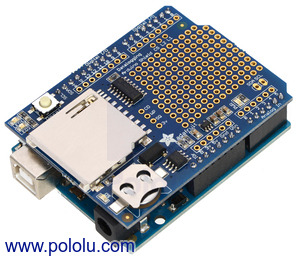 |
For more information, see the Adafruit Data Logging Shield for Arduino product page.
New product: 5V wall power adapter with USB port
Looking for a power supply for your Raspberry Pis, Arduinos, Wixels, or Maestro servo controllers? Look no further!
This UL-certified AC-to-DC converter gives you an easy way to deliver up to 1 A to your USB-powered device from a US-style AC electrical socket. It has been specifically designed to supply 5.25 V instead of 5 V to help ensure that the device it is powering receives close to 5 V even when the current draw is high. This converter is safe for use with USB-compliant devices.
This adapter does not include a USB cable, but it features a USB “A” port that you can plug a standard USB cable into, which makes it great for transitioning your project from USB to wall power.
For more information, see the 5V wall power adapter product page.
New product: Hydra Smart DC Power Supply
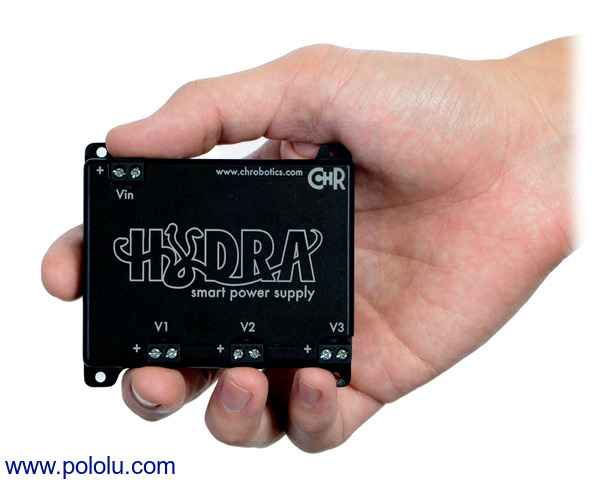 |
The Hydra is a triple-output power converter from CH Robotics designed to make it easier to get the power you need for your next project. The Hydra can quickly give you access to three independent, software-configurable DC output voltages to power your system. The easy-to-use Smart Power Supply Control Software makes it quick and simple to configure and control the Hydra’s outputs from your computer via USB. Bench-top power supplies can be large and bulky, but the Hydra fits in the palm of your hand and can also be configured from a user-programmable microcontroller via serial. This flexibility makes the Hydra a great fit for a large variety of projects, whether you are building an industrial system or a small mobile robot.
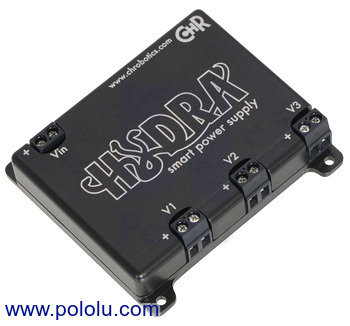 |
For more information, see the Hydra product page.
The "Internet of Things" at AT&T DevSummit Hackathon
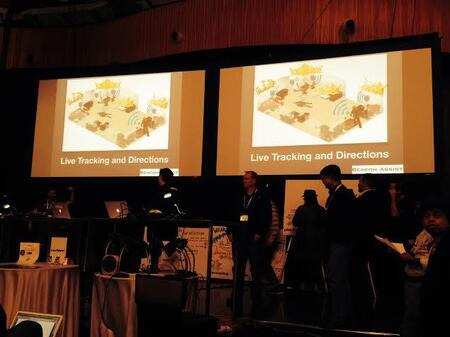 |
Our presentation at the AT&T DevSummit Hackathon. From @IoTHackathon. |
|---|
This weekend, a few of my coworkers and I participated at the AT&T Developer Summit Hackathon at the Palms Casino here in Las Vegas. We were exposed to some of the latest technology in the “Internet of Things”, which refers to the process of collecting data that is transmitted wirelessly from a plethora of tangible items. The event was by far the best hackathon I have attended. As developers, we were given the opportunity to work with some of the latest relevant products:
 |
FRDM-KL46Z Kinetis development board by Freescale and SocketModem HSPA+ Arduino Shield by MultiTech, two boards that were available at the event. |
|---|
We partnered up with four developers from around the country to create an app that tracks someone having an emergency and directs first responders to their location. We envision this could be useful at large venues such as Rain Nightclub, where the hackathon was held.
To locate a patron within the nightclub, we used a fixed array of Qualcomm Gimbals, which are Bluetooth Smart devices that send signal strength metrics to nearby Bluetooth receivers. We created an iOS app that received data from the Gimbals and transmitted that data to the AT&T M2X API, a cloud-based datastore.
Next, we used that data to point the first responder in the direction of the patron. Our “first responder” wore an unreleased Plantronics Bluetooth headset, most similar to their Voyager Legend line, with a built in gyroscope. We calibrated the gyro at the entrance to the room and then (using trigonometry) we told the first responder to “turn left”, “turn right”, or “go straight”.
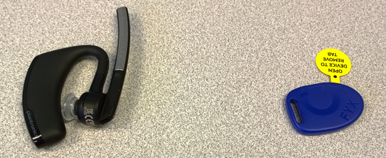 |
Plantronics Voyager Headset and Qualcomm Gimbal. |
|---|
To our delight, we won a prize for the “Best Use of a Plantronics Product” category: thanks, Plantronics! Overall this was a great experience. We plan to continue to develop applications for our Plantronics headset and the "Internet of Things” in general. We look forward to applying what we learned to develop new products here at Pololu.
Free Elektor magazine January/February 2014
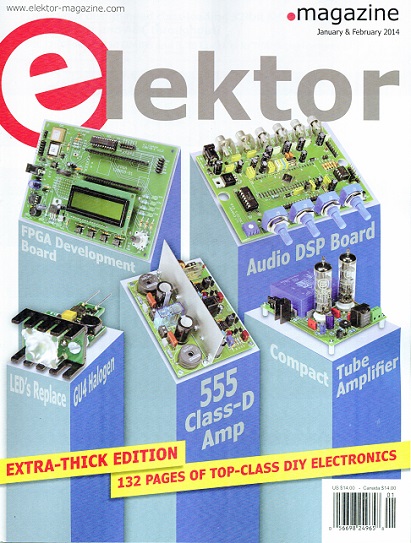 |
Get a FREE copy of Elektor magazine’s January/February issue with your order while supplies last. To get your free issue, enter the coupon code ELEKTOR0114 into your shopping cart. The magazine will add 8 ounces to the package weight when calculating your shipping options.
For other issues and more information, see our Free Elektor Magazine Offers page. All issues are now available for shipping worldwide!
Raspberry Zumo Robot
Frédéric Jelmoni built a neat robot with a Raspberry Pi and a Zumo Chassis Kit. The Raspberry Zumo robot can be controlled over WiFi using telnet. The server on the Raspberry Pi is written in Python and uses the RPIO library to send signals to an SN754410 motor driver that drives the two 100:1 Micro Metal Gearmotors HP in the Zumo chassis. The server also controls an RGB LED and a buzzer. A stripped-down Logitech webcam attached to the front of the robot provides video that is streamed over the web using mjpg-streamer.
For more details, see the Raspberry Zumo page, which is written in French. Also, see our post from last October about a similar robot, the Pibot-B.



